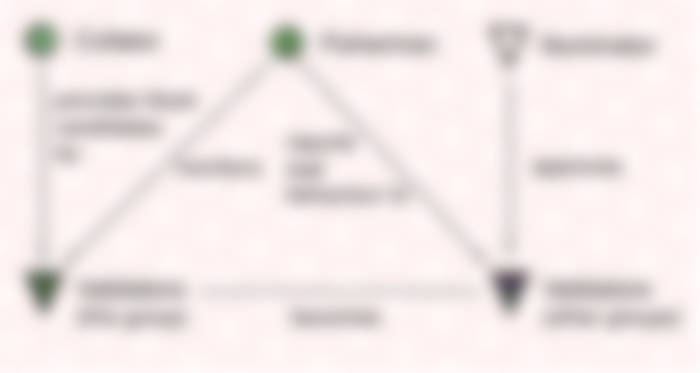Token Review: Polkadot
Hello everybody and welcome back in this third token review of my new Token Review.
Today I will introduce Polkadot to you.
Polkadot is a revolutionary blockchain infrastructure designed to enable the next generation of Web where users control their own data and identity. It creates this infrastructure by providing a way to connect different and independent blockchains together in a single network, allowing them to interoperate, exchange data, and process transactions with the benefit of shared security provided by the Polkadot Relay Chain. It also allows interaction with non-blockchain systems and established blockchains such as Bitcoin and Ethereum.
Founded by some of the main figures in the sector, around the project we find Gavin Wood, co-founder and CTO of Ethereum as well as developer of the most famous language for Smart Contract Solidity, and Peter Czaban, technological director of the Web3 Foundation. Polkadot is therefore not one of the many new projects in the crypto sphere but it is one of the protocols that aims to solve one of the biggest problems of cryptography, namely scalability.
Polkadot team proposed a solution: create parallel chains capable of communicating with each other to avoid clogging a single chain of blocks. These chains are called Parachain and have different characteristics from each other: the computation of transactions is distributed among the various Parachains, allowing a large number of them to be processed very quickly.
Let’s talk about DOT!
DOT is the internal token of the Polkadot network. This token allows users to vote on potential code changes, which then automatically update across the network if a consensus is reached.
Polkadot currently has an allocation of 1 billion DOT tokens, following the network’s renaming from an initial maximum supply of 10 million in August 2020. The renaming was undertaken purely to avoid the use of small decimals and make calculation easier. While all balances were increased by a factor of one hundred, this did not impact the distribution of DOT or holders ’proportional share.

One of the most interesting features of Polkadot is the ability to transfer any type of data on public, open and authorization-free Blockchains, as well as on private (or DLT) Blockchains through authorization. This therefore makes it possible to develop applications that obtain data from DLT and use them on public Blockchains capable of demonstrating the certainty of the data but not the data itself.
Polkadot, at an operational level, is made up of 3 fundamental parts:
Relay Chain
Parachain
Bridges
I do not want to stop too long to explain these points at the moment, in the second article dedicated to Polkadot, which I will publish next week, I will go on to explain in detail these terminologies and many other technical curiosities.

So keep following me to stay updated!
Another very important point to fully understand Polkadot is represented by the consensus rules to manage the huge amount of data that the protocol has to deal with. Here too there are different types of "nodes", each with a specific task:
Nominators
Validators
Fisherman
Collators
Polkadot plays the role of guarantor in the world of Blockchains involved in the network, allowing transactions to be carried out safely, cross-chain and with high stability.
In addition to having a complex consensus algorithm and not simple operation at first glance, this digital currency also has tokens useful for staking and for the security of the protocol.
The Polkadot network and cryptocurrency looks to be a rising star in the cryptocurrency industry.
I said that Polkadot is a revolutionary blockchain infrastructure designed to enable the next generation of Web where users control their own data and identity.
Then I talked about 3 fundamental parts:
Relay Chain
Parachain
Bridges
Let’s get into it!
Relay Chain is the heart of Polkadot, responsible for the network’s security, consensus and cross-chain interoperability.
The relay-chain will likely be a chain broadly similar to Ethereum and it is mapping addresses to account information such as balances and a transaction counter to prevent replays. Placing accounts here fulfils one purpose: to provide accounting for which identity possesses what amount of stake in the system.
Parachains sovereign blockchains that can have their own tokens and optimize their functionality for specific use cases. To connect to the Relay Chain, parachains can pay as they interoperate or they lease a slot for continuous connectivity (this is pretty similar to the Lightning Network).
Each parachain is defined in the Parachain Registry. It is a relatively simple database-like construct and holds both static and dynamic information on each chain. Static information includes the chain index (a simple integer), along with the validation protocol identity, a means of distinguishing between the different classes of parachain so that the correct validation algorithm can be run by validators consigned to putting forward a valid candidate.
Then Bridges are special blockchains that allow Polkadot shards to connect to and communicate with external networks like Ethereum and Bitcoin.

Source: https://polkadot.network/
Just above I talked about these tasks:
Nominators
Validators
Fisherman
Collators
let's look at them specifically:
A nominator is a stake-holding party who contributes to the security bond of a validator. They have no additional role except to place risk capital and as such to signal that they trust a particular validator (or set thereof) to act responsibly in their maintenance of the network. They receive a pro-rata increase or reduction in their deposit according to the bond’s growth to which they contribute. Together with collators, nominators are in some sense similar to the miners of the present-day PoW networks.
A validator is the highest charge and helps seal new blocks on the Polkadot network. The validator’s role is contingent upon a sufficiently high bond being deposited, though we allow other bonded parties to nominate one or more validators to act for them and as such some portion of the validator’s bond may not necessarily be owned by the validator itself but rather by these nominators.
Fisherman are not directly related to the block-authoring process and they can be independent “bounty hunters” motivated by a large one-off reward. Due to the existence of fishermen, we expect events of misbehavior to happen seldom, and when they happen, it is just a matter of personal secret key security, rather than other malicious intent.
The name comes from the expected frequency of reward, the minimal requirements to take part and the eventual reward size. Fishermen get their reward through a timely proof that at least one bonded party acted illegally. Illegal actions include signing two blocks each with the same ratified parent or, in the case of parachains, helping ratify an invalid block.
Transaction collators are parties who assist validators in producing valid parachain blocks. They maintain a “full-node” for a particular parachain; meaning that they retain all necessary information to be able to produce new blocks and execute transactions in much the same way as miners do on current PoW blockchains. Under normal circumstances, they will collate and execute transactions to create an unsealed block, and provide it, together with a zero-knowledge proof, to one or more validators presently responsible for proposing a parachain block.

Source: https://polkadot.network/
So there you have it. These unique features are partly why many consider Polkadot to be one of the most promising and well thought-out projects in the blockchain space.
The underlying technology makes its case as one of the most important and eye-grabbing projects out there. It will be interesting to see what Polkadot does in the future.
Polkadot definitely has some potential. How this potential will develop in the next months and (hopefully) years, may become a revolution in the consensus mechanisms.
Polkadot describes itself as a next-gen blockchain protocol that connects several specialized blockchains into one unified system/network.
What is your idea about Polkadot?
Keep following me to find out the next coin I'm going to analyze.
Do you have other coins that you would like to see analyzed? Leave a comment here and your desire may find fulfillment!



